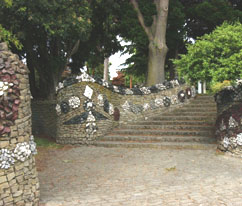Cultural Landscape Preservation
 Cultural Landscapes provide a sense of place and identity; they map our relationship with the land over time; and they are part of our national heritage and each of our lives.
Cultural Landscapes provide a sense of place and identity; they map our relationship with the land over time; and they are part of our national heritage and each of our lives.
They are sites associated with a significant event, activity, person or group of people and can range in size from thousands of acres of rural land to historic homesteads.
Cultural Landscape can also be grand estates, farmlands, public gardens and parks, college campuses, cemeteries, scenic highways, and industrial sites; or even works of art, narratives of cultures, and expressions of regional identity.
Types of Cultural Landscapes
- Designed Landscape - a landscape that was consciously designed or laid out by a landscape architect, master gardener, architect or horticulturist according to design principles or an amateur gardener working in a recognized style or tradition.
- Vernacular Landscape - a landscape that evolved through use by the people whose activities or occupancy shaped that landscape. Through social or cultural attitudes of an individual, family or a community, the landscape reflects the physical, biological, and cultural character of those everyday lives.
- Historic Site - a landscape significant for its association with a historic event, activity or person.
- Ethnographic Landscape - a landscape containing a variety of natural and cultural resources that the associated people define as heritage resources.
Studies/ Reports
- Watergarden Fountain Study - Capitol Campus, Olympia
- Protecting Cultural Landscapes: Planning, Treatment and Management of Historic Landscapes - Preservation Brief #36
- Cultural Landscape Inventory: Professional Procedures Guide




